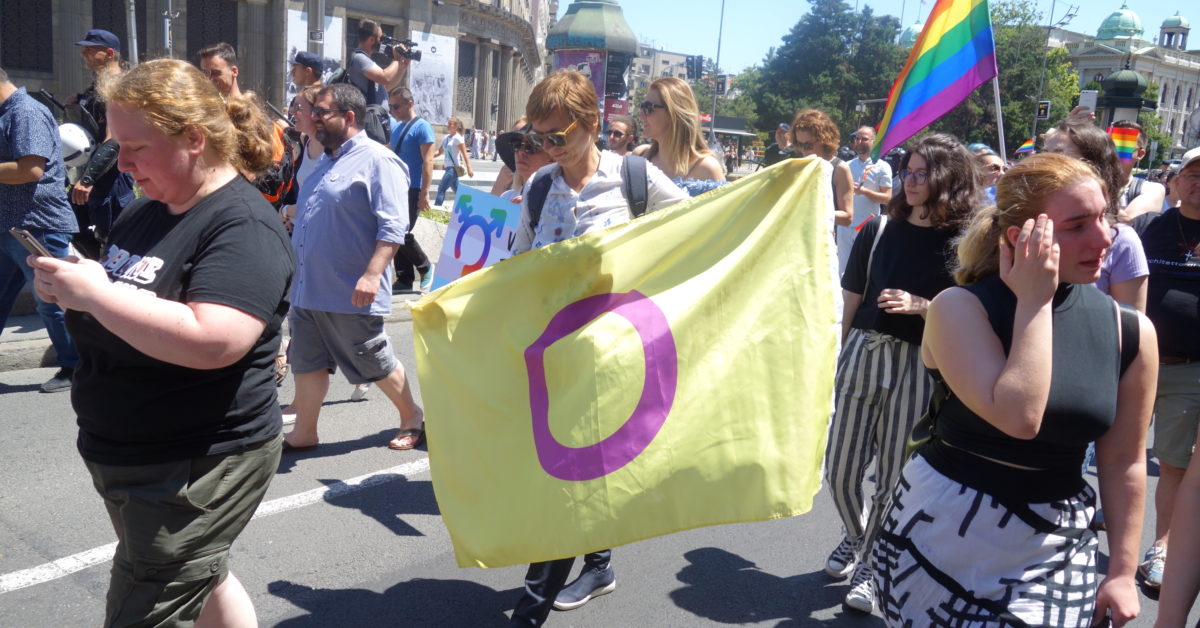Do you know what the “I” in LGBTQIA stands for? Medical News Today has spoken to intersex educator Aleksander Berezkin to find out more about what it means to be intersex, with a focus on healthcare and mental health support.

Image credit: Bojan Cvetanović / Wikimedia Commons, 2019.
“Intersex” is a biological identity that gets little coverage and attention, not just in mass media, but also in terms of medical research and data collection.
At present, it remains unclear how many intersex people there are in the world.
That is, in part, because definitions of what it means to be intersex vary. However, the term generally refers to people who are born with genitalia, and then develop other traits, that doctors cannot easily classify as pertaining to binary, or “male” or “female,” biological sex.
Many countries — and the United Kingdom is one such example — also fail to collect and store information about intersex newborns.
The U.K.’s Office for National Statistics, for instance, note that “[f]or births where the sex of a child is indeterminate or where there are intersex traits, the [official] advice […] is that the registration [of the newborn] should be deferred until medical investigations have been completed.”
Intersex individuals can also face a degree of unhelpful medical scrutiny. The American Psychological Association, for instance, describe “intersex” as “a variety of conditions,” and claim that the term “disorders of sex development (DSD)” might be “more accurate and less stigmatizing than the term intersex.”
Yet characterizing intersex as a type of disorder presupposes a clinical perspective with which not all intersex individuals agree. For example, the Intersex Society of North America — whose members included intersex activists and educators and which closed its doors in 2008 — specify that “[i]ntersex itself is not a disorder, rather a variation.”
They note that the word disorder “refers to the underlying cause, not intersexuality itself, and certainly not to the whole person,” though each intersex individual may choose to refer to themselves in a different way.
To get a better understanding of what it can mean to be intersex and what challenges intersex individuals may face in terms of accessing primary healthcare and mental health support, MNT has interviewed New York-based intersex educator Aleksander Berezkin.
We have lightly edited the interview transcript for clarity.
Medical News Today: How would you explain “intersex” to someone who has never heard of the term?
Aleksander Berezkin: This is a good question. There are a lot of definitions. I chose the one from U.N. Free & Equal. [N.B.: Free & Equal is a public information campaign from the U.N. Human Rights Office, for which Aleksander Berezkin volunteers.]
According to this definition: “Intersex is an umbrella term used to describe a wide range of natural bodily variations. Intersex people are born with sex characteristics (including genitals, gonads, and chromosome patterns) that do not fit typical binary notions of male or female bodies.”
For example, I was born with an additional chromosome, XXY, and my body was slightly different before [I undertook] hormone therapy. I had big breasts (gynec

